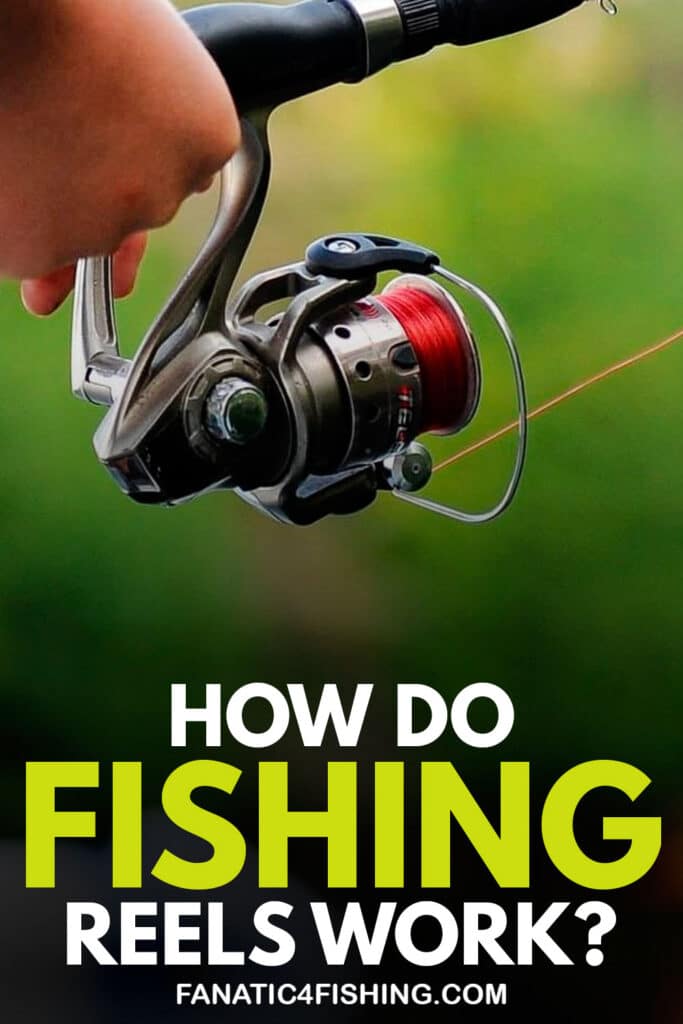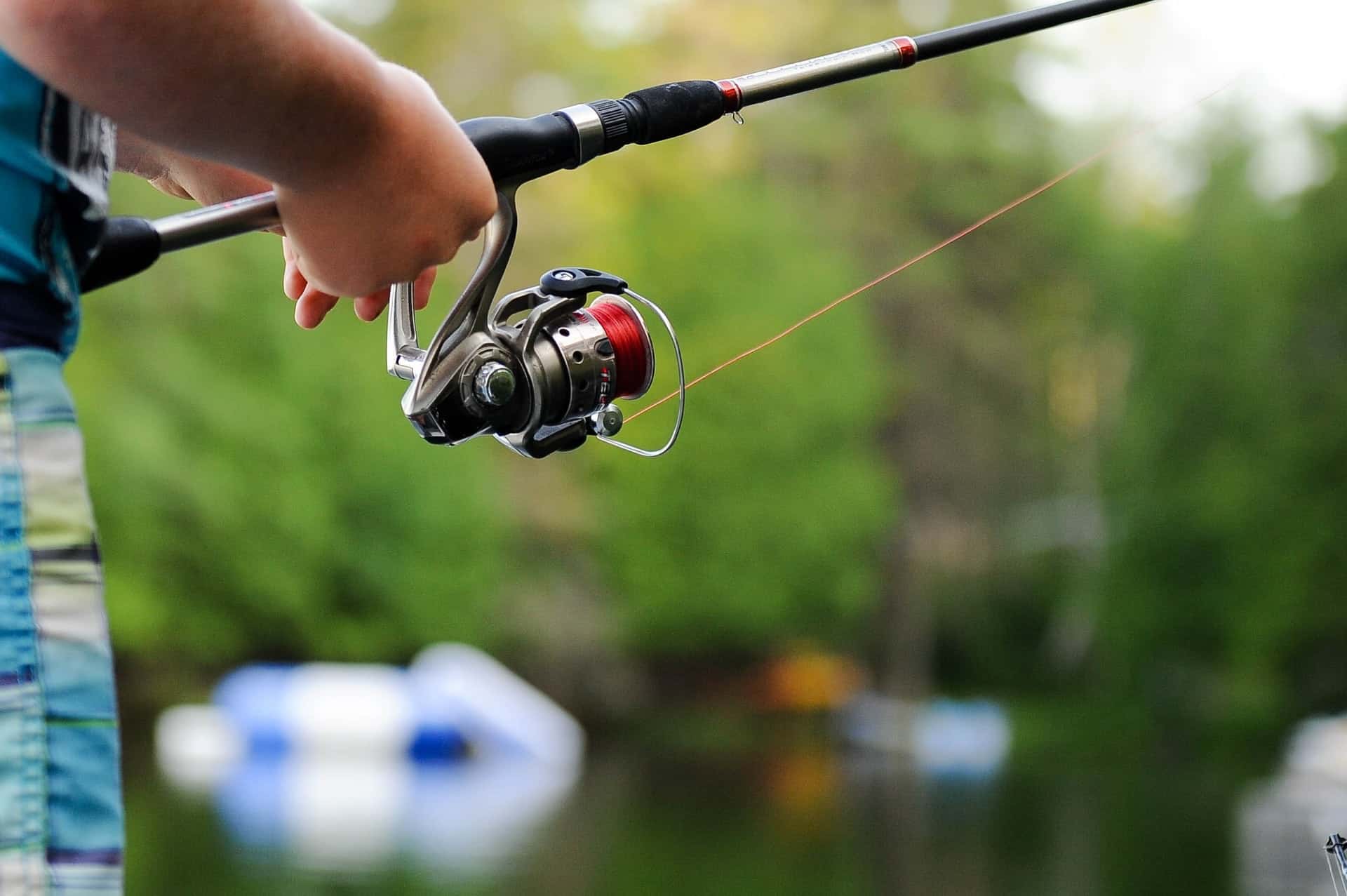A fishing reel is one of the most complicated tools that a fisherman has. The reel may look like a small and simple tool, but it is packed with intricate technology that helps you cast long distances and tires out your fish. It has over 130 components and a spool that has a specially branded line that extends over 600 yards and can take the weight of over 65 pounds. It also has small ball bearings that are responsible for spinning the reel thousands of times per minute and the precision gears are responsible for increasing the speed and turning power of the reel. Here is a comprehensive guide that will give you a detailed account of how different fishing reels work.
All of these components come together to make a miniature masterpiece that is every fisher’s best friend. There are different types of fishing reels that cater to different styles of fishing. However, if you are a beginner you might have a hard time deciding which one is best for you.
Different Types of Fishing Reels and How They Work
Spinning Reel
- GREAT VALUE - Loaded with features yet low on price. KastKing Summer/Centron offers the best value...at any level.
- LIGHTWEIGHT - narrow graphite frame design and computer balancing system combine high performance in a compact Spinning Reel.
- HIGH POWERED - KastKing Summer/Centron spinning reels Superior Drag System offers incredible stopping power up to 17.5LBs.
Prices pulled from the Amazon Product Advertising API on:
Product prices and availability are accurate as of the date/time indicated and are subject to change. Any price and availability information displayed on [relevant Amazon Site(s), as applicable] at the time of purchase will apply to the purchase of this product.
A spinning reel is undoubtedly one of the most popular and widely used reels for bait fishing. Every angler has used this reel at some point in their career. There are many different manufacturers of spinning reels, but regardless of what company makes the reels, they all have the same features but might look just a little different when it comes to the design.
Spinning reels get their name because of the rotating bail arm and wire that goes around the spool. The spool doesn’t rotate itself, it only moves up and down allowing the line to rewind on the spool evenly. Without this feature, the line would bunch up in one place which might end up jamming the rotor arms.
Spinning Reel Bail System
The bail itself is a wire contraption that bends across the top of the spool and helps manage the line. When the bail is closed, you can retrieve your line, whereas you can pop the bail open when you are casting. A spinning reel has a long neck which provides the right amount of space for the bail to spin freely and not interfere with your fingers or the handle itself.
Another feature of a spinning reel is its anti-reverse switch, sometimes located above the rotor and sometimes located on the heel of the rotor. When the switch is in the on position, you can only turn your handle in one direction which comes in handy when retrieving the line. Turning the anti-reverse off will allow you to turn your reel in both a clockwise or anti-clockwise direction.
Last but not the least, is the drag system. In some spinning reels, the drag knob is located on the cap of the spool. While others have it on the rear end of the body. Regardless of where the drag system is located, it does the same job, it adds tension to the line as it is pulled off the reel.
How Do Fishing Reels Work – Spincast Reel
- HIGH PERFORMANCE – The heart of a good Spincasting Fishing Reel is in the line pick up system. KastKing Brutus Spincaster reel features a stainless-steel.
- HIGH SPEED - With 4.0:1 gear ratio, KastKing Brutus Spincast Fishing reels will pick up line faster and save time in between casts.
- SMOOTH AND DURABLE – Brutus Spincast Reels are built for smooth performance with 5 Stainless-Steel.
Prices pulled from the Amazon Product Advertising API on:
Product prices and availability are accurate as of the date/time indicated and are subject to change. Any price and availability information displayed on [relevant Amazon Site(s), as applicable] at the time of purchase will apply to the purchase of this product.
A spin-cast reel is called so because it shares the properties of both a spinning reel and a casting reel. There are two different types of spin-cast reels available on the market. One has a short neck and a push-button on the back of the reel that is pushed by your thumb. This spin cast reel is used on a baitcasting reel. Whereas the other one has a long neck with a lift trigger, lifted by the index finger. This reel is used on a spinning rod.
If we take a closer look at the spin-cast reel with the shorter neck, one of the first things that you notice is the reel cap. If you take the cap off you can see the spool and the bail collar. It is used to pick up the line and wrap it around the spool. You have to screw the cap back on in order for the reel to work because it helps control the line. The reel cannot function without the cap.
Spin Cast Reel Drag System
A spin-cast reel also has an internal drag system. The drag is controlled by a small spinning wheel that sits below the cap and is operated by the thumb. Some of the models also have an external drag. This located just behind the handle allowing you to control the drag using your index finger.
One of the best things about the spin-cast reel is that it is very easy to use. Which makes it perfect for you if you are a beginner. This is because it is a closed-face reel which leaves no risk of the line tangling as it is kept behind the cap. Moreover, if you are a beginner and aren’t willing to spend hundreds of dollars to buy new fishing equipment, this reel is the best option for you because it is relatively inexpensive and easy to use.
How Do Fishing Reels Work – Baitcaster Reel
- POWERFUL- Advanced, 4-washer, gives the low profile baitcasting reel physically powerful 18LB carbon fiber drag to handle the big fish you are after
- DURABLE - Industrial durable-strength, climate-resistant Japanese Hami cut 3604 brass gears, these are all top quality gears you expect for baitcaster fishing reels
- PERFORMANCE - Low profile design bait caster featuring 7.1:1 gear ratios specifically designed for the versatile angler.
Prices pulled from the Amazon Product Advertising API on:
Product prices and availability are accurate as of the date/time indicated and are subject to change. Any price and availability information displayed on [relevant Amazon Site(s), as applicable] at the time of purchase will apply to the purchase of this product.
If you are new to the sport of fishing, you might find baitcaster reels a lot more complicated than a spinning reel. They are a lot more advanced and sophisticated which is why they require a more experienced angler. If you are planning on using a baitcaster reel, you need to understand its various components thoroughly. This will help you fine tune every tiny mechanism of the reel according to your style and preference to become a premier angler.
A baitcaster reel is designed to sit on top of fishing rod in a way that the spool stays parallel to the rod. Which means that the line will come off the spool in line with the rod. In a baitcaster reel the spool moves with the casting of the line. If the spool moves faster than the casting of the line, your line will end up in a bunched up knotty mess. This is one of the main reasons why baitcaster are only recommended for advanced anglers.
Baitcaster Reel Drag and Braking
If we look at the build of a baitcaster reel, the star shaped drag is situated behind the handle of the reel. You can use it to either increase or lower the tension on the line while fishing. There is also a breaking system to the opposite side of the handle. Which is used to regulate the tension on your spool while casting. Adding more brakes to your reel provides a bit more resistance. This will keep your line from getting tangled up into a big birds nest.
You can also adjust the rotating speed of your spool using the spool tension knob. This is situated just behind the star drag. Where the breaking system helps you regulate the spool speed according to how much line comes off. The spool tension knob is there for fine tuning the spool when using different lures that feature varying weights.
How Do Fishing Reels Work: Fly Fishing Reel
- ONE-YEAR-WARRANTY – we as a 13 years fly reel factory, offer “No Hassle” warranty for all our reels.
- OUTSTANDING VALUE – this reel incorporates all of the features of reels that costing much more money.
- Strong and Durable All-aluminum construction, Large arbor design for rapid line retrieval
Prices pulled from the Amazon Product Advertising API on:
Product prices and availability are accurate as of the date/time indicated and are subject to change. Any price and availability information displayed on [relevant Amazon Site(s), as applicable] at the time of purchase will apply to the purchase of this product.
Flying reels are fairly simple when it comes to the build and usage. However, there are a variety of styles and approaches to making these, which can create a bit of confusion at times. Flying reels are also called single action reels. Which means turning the handle once will pick up one spool width of line. These reels are often used for recreational fishing and uses a lightweight artificial fly as bait. Which can make casting a bit tricky for newbies.
When using a fly fishing reel, the first thing you need to do is select a fly rod. Fly rods have different weights that determine what type of fish they are suitable for. If you are looking to catch smaller fish in a small stream, a lighter weight rod will do. Whereas for bigger fish in large rivers and lakes, you should always go with a heavier rod.
Buying a Fly Reel
When buying a fly reel keep the rod size that you will be using in mind. Because fly reels are designed for purticular rod sizes. Once you attach the reel to your rod, make sure that the rod is balanced at the handle which will reduce wrist strain while casting. Most of the modern fly rods that you will find in the market are designed to be balanced. However, if it is your first fly rod, you should ask the salesperson to set up the whole thing for you. Then you can get the feel of a balanced rod.
Fly reels have unique fishing lines that give weight to cast the artificail fly. These fly lines have different types. Such as weight forward taper, double taper, level and smooth heads. Each of these is designed for different casting technioques and shooting styles.
When selecting a fly, you need to consider the kind of fish you will be catching. The style of fly fishing you prefer and the kind of water you will be fishing in.











